
Here’s a recording in a mystery language.
Can you identify the language, and do you know where it’s spoken?

Here’s a recording in a mystery language.
Can you identify the language, and do you know where it’s spoken?
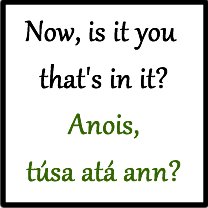
An interesting Hiberno-English expression I heard today is “Is it you that’s in it?”, which is a direct translation of the Irish “tusa atá ann?“, and is used as a greeting meaning something like, “Hello, how are you?”.
Another Hiberno-English expression that came up in conversation this morning was “Don’t talk to me (about that)”, which is used when agreeing with someone. For example, if someone says to you, “It’s a terrible day today” (referring to the weather), you might reply “Don’t talk to me about that”, meaning something like “It is indeed”.
The word now, and the equivalent in Irish, anois, is also used a lot in Ireland, also well as meaning at this moment, it can be used to express dismay; disbelief; in pubs, shops and restaurants as a way to ask customers what they would like; and when delivering orders in pubs and restaurants – in a similar way to the German word bitte.
This week I came across the wonderful-sounding Irish word – spleoid [sˠpˠlʲodʲ], which appears in expressions like Spleoid ort! (Shame on you!) and Spleoid air! (Hang it! Confound it!). It is also used without the s as pleoid.
Other Irish words beginning with spleo- include:
– spleodar = cheerfulness, vivacity; exuberance, boisterousness
– spleodrach = cheerful, vivacious; exuberant, boisterous
– spleotán = patch of poor land
From: http://www.teanglann.ie
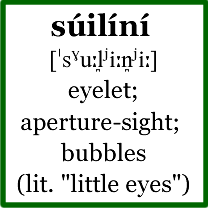
I discovered an interesting word in Irish yesterday – súilíní [ˈsˠuːl̪ʲiːn̪ʲiː] – which is a diminutive form of súil [sˠuːl̪ʲ] (eye) and means literally “small eyes”, and actually means eyelets, an aperture-sight, or bubbles. For example, uisce gan súilíní is still water (“water without bubbles”) [source].
More common Irish words for bubbles are bolgán and boilgeog.
The word súilíní is also used in Hiberno-English to mean “bubbles of fat floating on top of a stew or clear soup”, and is also written sooleens [source].
The word súil (eye) comes from *sūli, an alteration of the Proto-Celtic *sūle (suns), the dual of *sūlos, which is the genitive of *sāwol (sun), from the Proto-Indo-European *sóh₂wl̥ (sun). Apparently in Irish mythology the sun was seen as the “eye of the sky”, and the word for sun came to mean eye [source].
The words for sun in other European languages come from the same root, and most start with s, e.g. saũle (Latvian), sol (Swedish, Danish, Norwegian, Catalan, Spanish, Portuguese), Sonne (German), etc. There are some exceptions though, including haul (Welsh) heol (Breton), howl (Cornish) and ήλιος (ḗlios – Greek) [source].

Here’s a recording in a mystery language.
Can you identify the language, and do you know where it’s spoken?
In Hiberno-English (the English spoken in Ireland), children who misbehave are told not to be bold and might be sent to the bold step. I heard this expression being used the other day and it stuck in my mind as I hadn’t heard it before.
In the UK the equivalents are usually naughty and naughty step, which are defined as,
1. A place where a child is sent after misbehaving in order to reflect on their actions: whenever I did something bad, my uncle would make me sit in the naughty corner
2. A situation of public disgrace: the bosses of the unions found themselves on the naughty step
according to the Oxford Dictionaries
Have you heard bold being used in this sense?
Do you have other words to refer to misbehaviour or disobedience (especially in children)?
This week and next week I am in Gleann Cholm Cille (Glencolmcille) in Donegal in the north west of Ireland. I’m doing courses at Oideas Gael, an Irish language and cultural centre: a harp playing course this week, and an Irish language and culture course next week.
This is my 11th visit to Gleann Cholm Cille, and the second year I’ve done the harp course. On the harp course page of the Oideas Gael site there are pictures of the harp group from last year – I’m third from the right in the first one, and in the middle at the back in the second one (see also below).
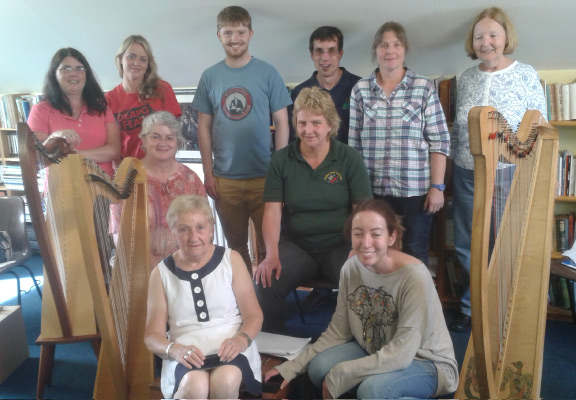
2014 Oideas Gael Harp class
This year we have a different teacher – a music student called Elsa Kelly, who also plays the flute. We’re learning some O’Carolan tunes and some other traditional Irish tunes, and it’s great fun.
I’ve been speaking plenty of Irish with people here – locals and students – and have also spoken bits of German, French, Scottish Gaelic, Dutch, Russian and Czech. People come here from all over the world to study Irish language, music and related subjects, so there are plenty of opportunities to practise languages.
So far the weather has been very mixed – cloudy and windy one minute, warm and sunny the next, then the rain starts, and it can go on all day and all night sometimes and be rather heavy. This is fairly typical for this part of Ireland, but local people are complaining that they haven’t had much of a summer this year yet.

Here’s a recording in a mystery language.
Can you identify the language, and do you know where it’s spoken?
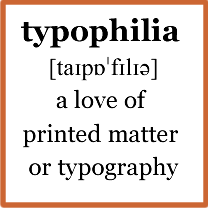
Whenever I see a well-written text with a good layout, it really appeals to me and I find myself staring at it and admiring it. I also admire particularly well-made fonts, and beautiful handwriting and calligraphy.
On the other hand, texts can be marred for me by a poor choice of font and/or layout, and by unattractive handwriting. Errors within texts can grate somewhat, but they far have less impact if I find the text visually appealing.
I’m not sure if my interest in alphabets and writing systems came from this typophilia, or if the typophilia (a word I just coined for this post) came from that interest. Is there another word that means “a love of writing in all its forms”? Graphophilia is a possibility.
If I ever get myself a phone with a camera, one thing I’ll take pictures of will be appealing texts, notices and signs.
Do any of you have a similar obsession with texts, writing and type?
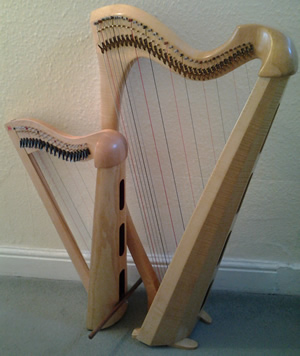
Mae fy nhelyn newydd wedi cyrraedd y bore ‘ma. Telyn efo 34 tannau o’r enw Ossian Clarsach< gan Tim Hampson ydy hi.
Pan ro’n i yn Plymouth dwy wythnos yn ôl yn ymweld â fy chwaer, mi es i i Bere Ferrers, nid mor bell o Plymouth, i gwrdd â Tim Hampson ac i weld y delyn. Mae o’n gwneud atgynhyrchiadau o delynau hanesyddol, ac yn atgyweirio telynau hefyd, ac roedd hi’n ddiddorol iawn gweld ei weithdy ac sut mae o’n gwneud telynau. Mae’r delyn Ossian wedi ei seilio ar delynau y 1930au a 1940au gwneud gan Henry Briggs yn Glasgow. Dw i wedi canu hi am oriau heddiw yn barod, ac mae hi’n swnio yn wych, ac yn edrych yn wych hefyd.
Yn y ffoto mae fy nhelyn newydd, a fy nhelyn bach y brynes i y llynedd.
My new harp arrived this morning. It’s a 34 string Ossian Clarsach made by Tim Hampson.
While I was in Plymouth visiting my sister a few weeks ago, I went to to Bere Ferrers, not far from Plymouth, to meet Tim Hampson and to see the harp. He makes reproductions of historical harps, and repairs and services harps as well, and it was fascinating to see his workshop and how he makes harps. The Ossian harp is based on harps made in the 1930s and 1940s by Henry Briggs in Glasgow. I’ve already played it for several hours today, and it sounds wonderful, and looks good too.
The photo shows my new harp with my little lap harp, which I got last year.